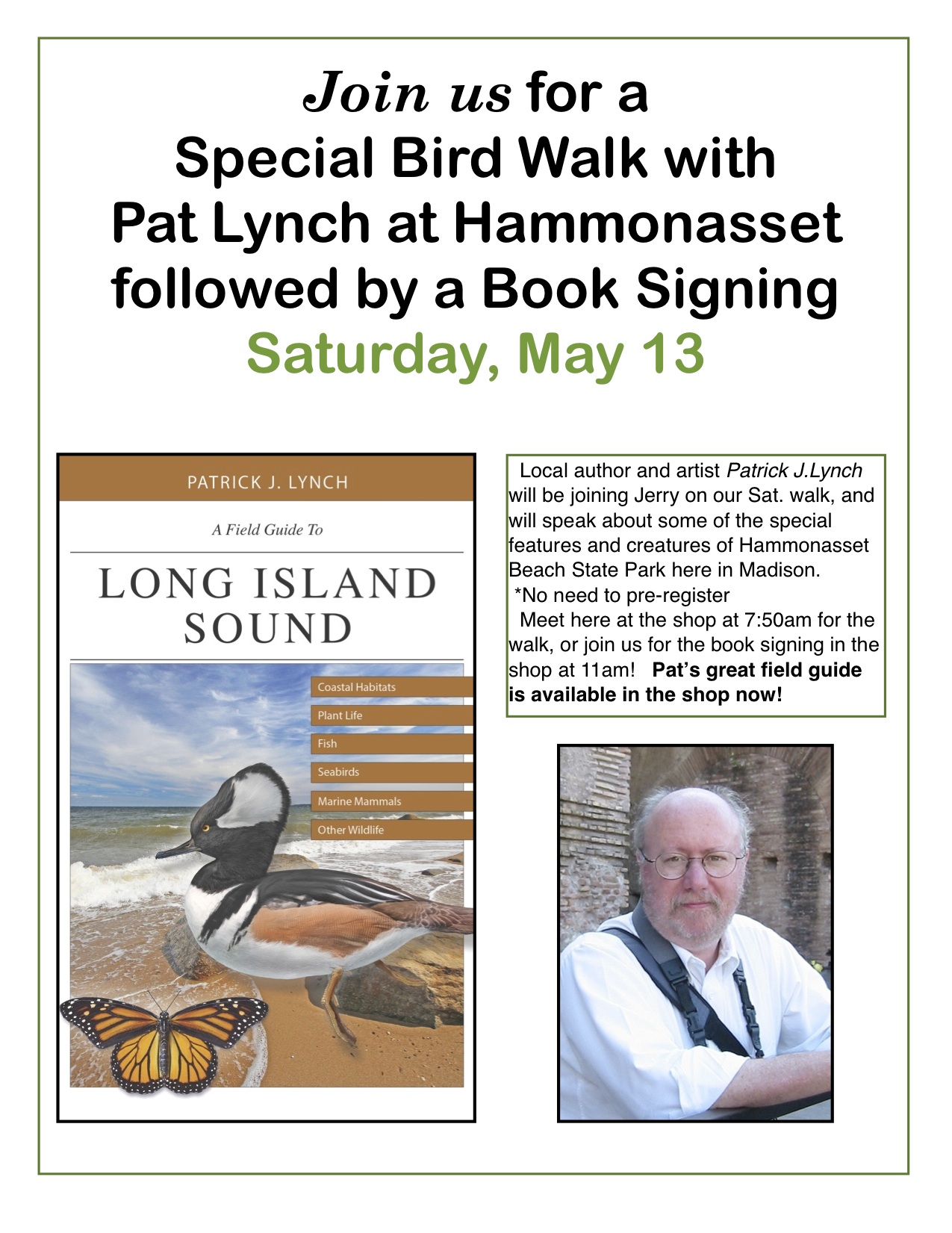New Field Guide to Long Island Sound is garnering praise
We here in CT have close ties to Long Island Sound, as it forms the frame of our southern border. It’s a large estuary that provides recreation, supports a myriad of wildlife, is a waterway for commerce, affects our weather patterns, and so much more. In easily several hundred trips to the shore, we here in the shop have asked ourselves how much do we really know about its natural history? Visually we see distinctive rock formations, tidal marshes, sandy beaches and deciduous forests, but what are we really looking at?
Patrick Lynch’s great new book, A Field Guide to Long Island Sound, is a pocket-sized flexi-bound book that is brimming with maps, photographs, and drawings. Lynch’s guide introduces readers to the full breadth of the Sound’s environs from shorelines to deepest waters. With coastal areas at particular risk from climate change and pollution, his timing couldn’t be better. Whether readers are interested in the area’s geology and meteorology, its history of human intervention, or simply locating nature reserves and bird sanctuaries, they’re sure to find Lynch’s compendium indispensable.

LIS is a tidal estuary of the Atlantic Ocean, lying between the eastern shores of Bronx County, New York City, southern Westchester County, and Connecticut to the north, and the North Shore of Long Island, to the south.
The “Long Island Sound Study” goes further, with this great description; “Long Island Sound is an estuary, a place where saltwater from the ocean mixes with fresh water from rivers draining from the land. Estuaries are among the most productive ecosystems on Earth. They serve as feeding, breeding, and nursery areas for many species that spend most of their adult lives in the ocean. Our estuary is home to more than 1,200 species of invertebrates, 170 species of fish, and dozens of species of migratory birds live at least part of the year.
The Sound’s coastal communities are also home to more than 4 million people, and the Sound’s watershed, which begins at the headwaters of the Connecticut River near the Quebec border, includes nearly 9 million people…
Boaters and sunbathers by the thousands enjoy the Sound’s beaches and ports. Nature centers and aquaria offer a variety of educational opportunities to learn about the Sound’s ecosystem and its inhabitants. And bird-watchers only have to come to the shores of the Sound to delight in a variety of shore birds as well as a diversity and abundance of songbirds.”
Patrick J. Lynch, is a former senior digital officer in Yale University’s Office of Public Affairs and Communications and an award-winning author, designer, illustrator, and photographer. Pat’s new field guide (Yale University Press, March 2017) A Field Guide to Long Island Sound is the perfect companion for anyone who wants to learn more about this important waterway. Easy to read, wonderful illustrations! The book is in the shop, now.
